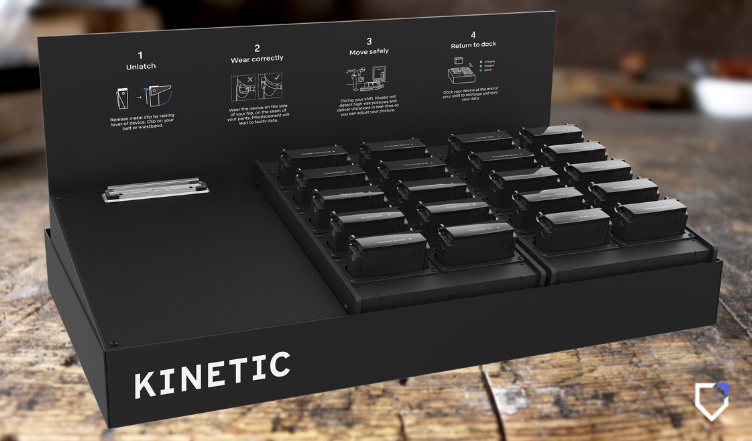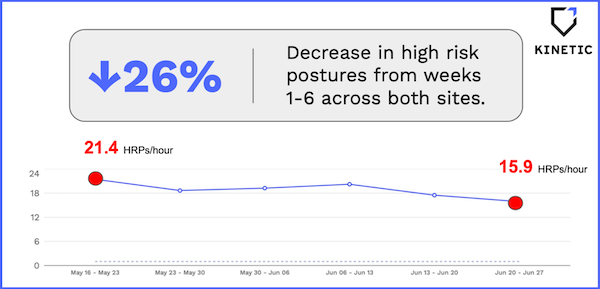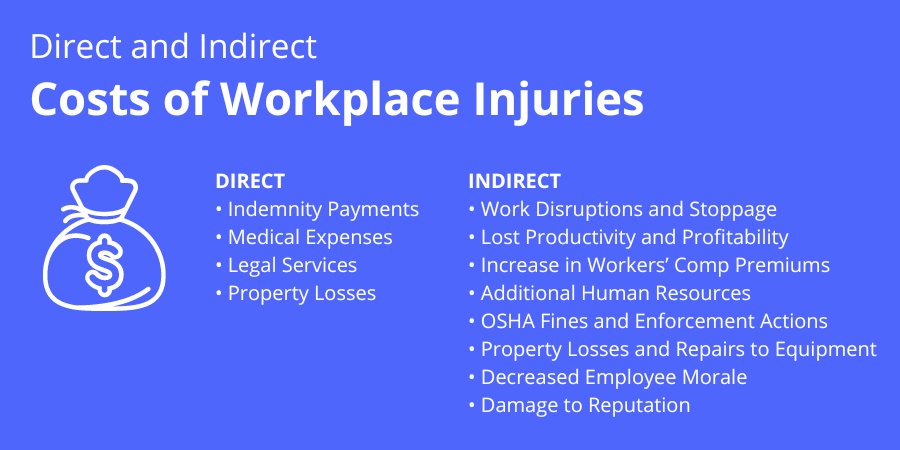Time is critical when reporting a work-related injury, especially among frontline workers who serve as the backbone of a company. When these essential employees are sidelined, it can have a direct impact on an organization’s productivity. Lag time also leads to increased direct and indirect workers’ compensation costs.
Early injury reporting practices and policies safeguard profits, allow employees to return to work faster, and enhance a culture of safety.
Here are five key reasons to report work-related injuries to insurers promptly.
1 – Lowered Claim Costs
Workers’ compensation costs for musculoskeletal disorders (MSDs) – the most common workplace injury – are high. Employers spend as much as $20 billion a year on direct costs for MSD-related workers’ comp. And if reporting is delayed, costs can continue to climb.
A study by the National Council on Compensation Insurance showed delayed injury reporting can increase comp claim costs by up to 51%.
During lag time, a claims team loses important time in reaching out to help an injured worker get prompt and appropriate medical care. This can lead to an injury getting worse and medical costs related to the claim increasing. For example, an untreated sprain may require surgery instead of physical therapy.
Ultimately, reporting delays can result in not only increased medical expenses, but also higher legal expenses and greater lost productivity (see #s 4 and 2!).
2 – Faster Return to Work
Injured employees may miss scheduled work shifts for weeks, months, or in some cases, years. In 2020, the median number of days away from work for all work-related injuries was 12, and for MSDs it was 14. And MSDs accounted for 32% of all injuries resulting in 31 or more days away from work.
With labor shortages across industries already impacting many companies’ productivity levels, lost work time is particularly burdensome and adds to the indirect costs of workplace injuries. Immediate reporting ensures prompt medical care, which can decrease employees’ time off work and minimize lost productivity.
3 – Improved Investigations & Fraud Detection
Good investigations rely on timeliness. When a work-related injury is reported right after it occurs, it allows for a more thorough look into the facts of the incident. Taking early steps to report and investigate an injury ensures that evidence can be gathered and documented immediately, where with a delay it may be overlooked or forgotten. Additionally, timely investigations allow for taking witness statements while an incident is still top of mind.
Furthermore, while most workers’ comp claims are legitimate, studies show that at least 1-2% are fraudulent. Delayed claims reporting aids fraud schemes by allowing deceivers to falsify or exaggerate details in the absence of timely evidence.
4 – Lowered Litigation Costs
Delayed reporting can increase the potential for litigation. Employees may seek attorney assistance with their claim if it hasn’t been reported in a timely manner, which results in increased employer costs. Or lag time can lead to employee dissatisfaction with medical care and benefits, and in turn, a litigated claim.
According to National Council on Compensation Insurance data, attorneys were involved in 12.8% of claims made the day of an accident compared to 31.7% involvement for claims made four weeks or more later.
Reporting claims immediately allows injured workers to feel confident in a company’s commitment to their health and to quickly come to understand the workers’ comp process, including details around medical care and wage replacement. This helps to ease concerns and avoid confusion that could lead to hiring an attorney.
5 – Ensured State Compliance
Prompt reporting of workplace injury helps companies comply with reporting requirements and laws, which are regulated by the states. When a worker is injured on the job, employers have a limited amount of time to file a workers’ compensation claim. Delayed reporting could result in a claim being denied or late reporting fines and penalties.
Workers’ comp claim deadlines vary from state to state and fines can range from $100 to $5,000.
Early Reporting Pays Off
For all the reasons outlined above, a best practice is to report work-related injuries as soon as possible. In fact, experts say reporting an injury within the first 24 to 48 hours after it occurs is the optimal way to keep workers comp costs down.
As soon as employers become aware of an injury they can begin to file a claim, even if they don’t have all the information to complete it. Submitting the first report of injury as soon as possible is crucial to getting the claims process started no matter how minor the injury is.
This prompt reporting will help companies to keep claims costs lower, minimize return-to-work delays, allow for smoother investigations, reduce the potential for costly litigation and avoid late reporting fines and fees. In addition, it lets employees know they are valued by providing them with immediate medical care and support.


















